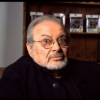Maurice Sendak

Maurice Sendak
Maurice Bernard Sendakwas an American illustrator and writer of children's books. He became widely known for his book Where the Wild Things Are, first published in 1963. Born to Jewish-Polish parents, his childhood was affected by the death of many of his family members during the Holocaust. Besides Where the Wild Things Are, Sendak also wrote works such as In the Night Kitchen, Outside Over There, and illustrated many works by other authors including the Little Bear books by Else...
NationalityAmerican
ProfessionChildren's Author
Date of Birth10 June 1928
CityBrooklyn, NY
CountryUnited States of America
Then one day my sister abandoned me at the 1939 World's Fair, and that incident is the essence of In the Night Kitchen. I was standing there with hundreds of other people waving back at the little midgets dressed like bakers when I turned around and my sister was gone! The next thing I know I'm screaming and crying and policemen are taking me to a big place with tons of kids who had all been abandoned like me. At least I was old enough to give them a name and an address.
I mean, being a child was being a child, was being a creature without power, without pocket money, without escape routes of any kind. So I didn't want to be a child.
Sendak is in search of what he calls a "yummy death". William Blake set the standard, jumping up from his death bed at the last minute to start singing. "A happy death," says Sendak. "It can be done." He lifts his eyebrows to two peaks. "If you're William Blake and totally crazy.
I said anything I wanted because I don't believe in children I don't believe in childhood. I don't believe that there's a demarcation. 'Oh you mustn't tell them that. You mustn't tell them that.' You tell them anything you want. Just tell them if it's true. If it's true you tell them.
Bumble-Ardy looks like a happy book. That's the funniest thing about it. But this was survival. I was working very hard to survive.
Childhood is cannibals and psychotics vomiting in your mouth!
I often went to bed without supper cause I hated my mother's cooking. So, to go to bed without supper was not a torture to me. If she was gonna hurt me, she'd make me eat.
I want to write something so simple, so short and so silly... and I want it to be for my brother.
It was a very difficult time. I was working on [umble-Ardy] when my partner and friend was dying of cancer. We set up a room in the house to be like a hospital room. Eugene died, and then I had bypass surgery. I was doing the book to stay sane while all this was going on.
Knowledge is the driving force that puts creative passion to work.
Kids tell you what they think, not what they think they should think.
I don't write for children. I write, and somebody says, 'That's for children.'
I never thought of Bumble-Ardy in that way. But I still have that same deep feeling for children who are in dire trouble. I see Bumble-Ardy as a lonely, unhappy kid who is doing the very best he can to be in the world, to have a party.
Children are the best living audience in the world because they are so thoroughly honest.